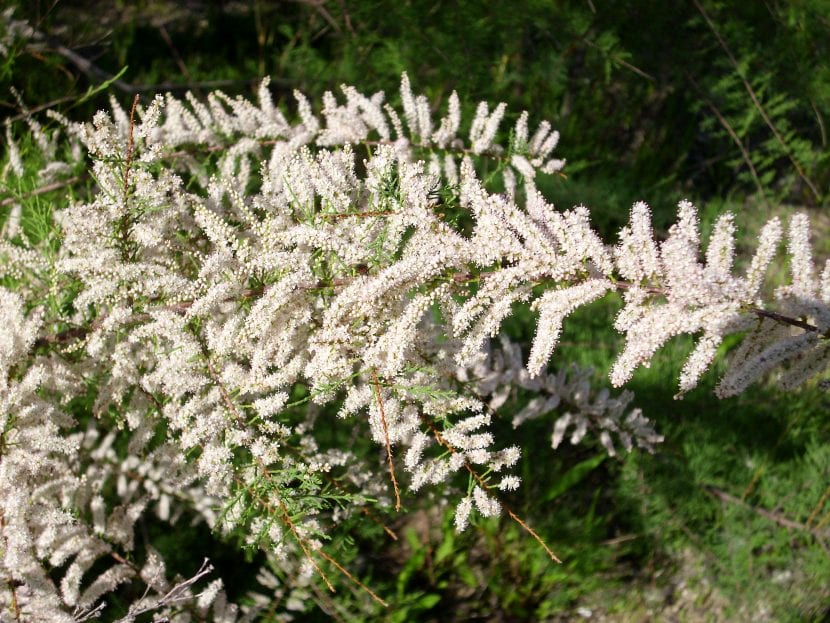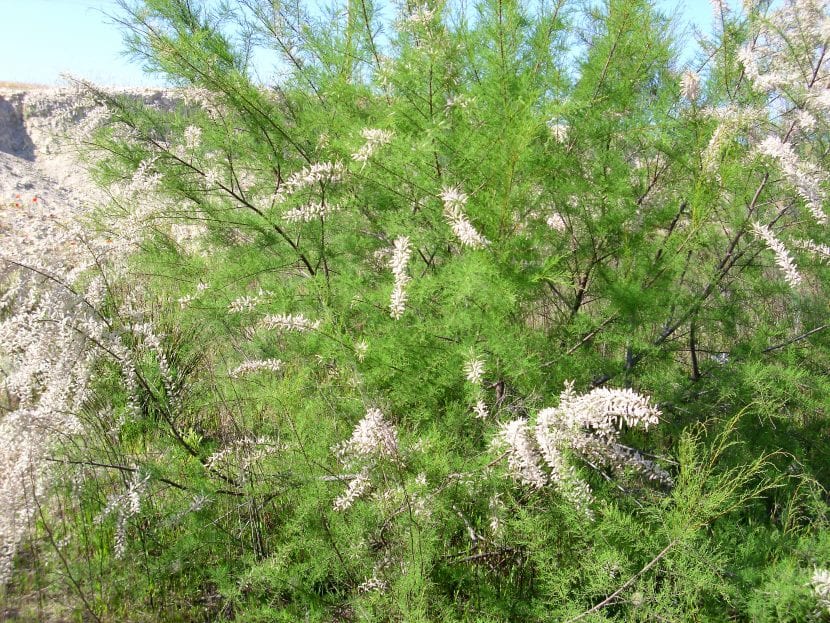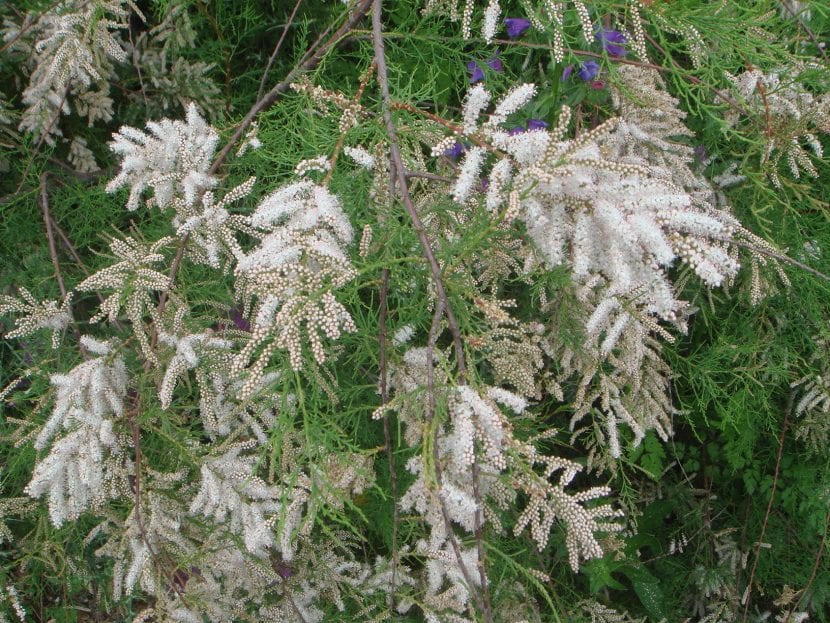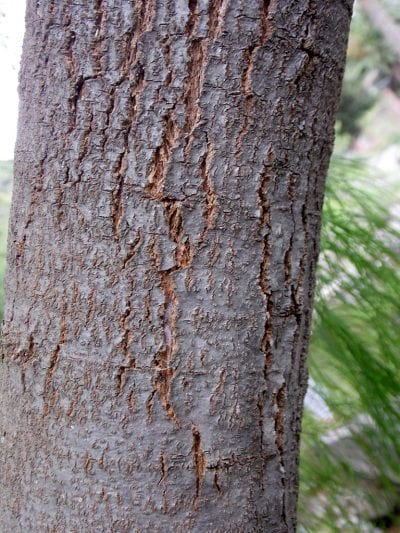
Image - Wikimedia / Javier martinlo
There are trees that need little water to flourish and grow healthy. These are also usually those that resist high temperatures, and those that in turn frost -as long as they are weak- do not harm them excessively. An example is the Tamarix canariensis, a kind of the most interesting for xero-gardens or low-maintenance gardens.
Its leaves are tiny, but very numerous, which makes its crown is quite dense and, in turn, over time comes to give a pleasant shade. Also, when it blooms it's a great pleasure to see it, so don't hesitate to get to know it better 😉.
Origin and characteristics of Tamarix canariensis

Image - Wikimedia / Javier martinlo
Known as taraje, taray de Canarias or tarajal, this is an evergreen tree or small tree native to the western Mediterranean and the Canary Islands. It is believed to be endemic to northwestern Africa, since the most primitive remains could have been found in that part of the African continent by the same author (Pierre Marie Auguste Broussonet, French naturalist and physician who lived between 1761 and 1807) who discovered those of the Quercus canariensis.
Grows to a height of 5-6 meters, with a crown composed of purple or reddish-brown branches from which green leaves sprout with many glands in charge of secreting salt. The flowers, which sprout in spring, are grouped in more or less hanging inflorescences, have 5 stamens each, and are white-pink.
What are the care it requires?
If you want to have a copy, we recommend that you provide it with the following care:
Location
El Tamarix canariensis it is a plant that must be outside, in full sun. It does not have invasive roots, but it is preferable to plant it at a distance of at least five meters from walls, walls, pipes, etc.
Earth
In its natural habitat it grows in saline soils, depressions, and near streams, therefore we are facing a very adaptable plant.
- Flower pot: you can use the universal substrate for plants sold in nurseries, garden stores, and here.
- Garden: not demanding. But if it has good drainage it will grow better. Anyway, I will tell you from experience that it tolerates clay and those that are not too fertile well.
Irrigation

Image - Wikimedia / Xemenendura
Rather little. Depending on the climate and the area, with one watering every 3-5 days in summer and another every week or ten days the rest of the year, you will be very healthy.
On the Mediterranean coast, with temperatures of up to 40ºC in summer and mild frosts down to -5ºC, with a marked dry season which coincides with the summer, and with annual rainfall that rarely reaches 500mm, this It is a plant that is only watered the first year that it is in the ground.
From the second on, its roots have grown strong and extended enough to survive the lack of water.
With this in mind, you can get an idea of more or less when you have to water 🙂.
Subscriber
From early spring to late summer, and especially if it is in a pot, it is highly advisable to fertilize Tamarix canariensis. For this you can use chemical fertilizers (universal, for green plants, or etc.) following the indications specified on the package, or if you prefer homemade fertilizers.
Pruning
Actually does not need it, but it will depend on how you want it to grow. It is a plant that tends to draw branches from a short distance from the ground, so if you want to have it as a tree or sapling we advise you to keep the trunk bare to a certain height.
Do these prunings at the end of winter, before it resumes its growth, with scissors or a small saw -depending on the thickness of the branch- previously disinfected with pharmacy alcohol or a few drops of dishwasher.
Plagues and diseases
Does not have. But be careful not to overwater it as the roots could start to rot, and therefore be very vulnerable to fungi.
Multiplication
Cuttings
Although it produces seeds, these are small and very light, which is why the Tamarix they tend to multiply more by cuttings in late winter. The way to proceed is as follows:
- First, cut a hardwood branch that is about 30 inches long.
- Then, infuse the foundation with rooting hormones (on sale here).
- Then, fill a pot -with drainage holes- with vermiculite (for sale here).
- Finally, plant it (do not nail it) in the pot, in the center, and water.
Keeping the pot outside, in a place protected from direct sun, and the substrate moist, it will root after 3-4 weeks.
Seeds
If you get seeds, you can sow them during the spring in seedling trays (for sale here) with universal substrate, putting a maximum of two seeds in each alveolus.
Then you will only have to place the seedbed outside, in semi-shade, and keep the substrate moist. Thus they will germinate in about 15-20 days.
Rusticity

Image - Wikimedia / Krzysztof Ziarnek, Kenraiz
Resists up to -7ºC without being damaged.
What did you think of the Tamarix canariensis?